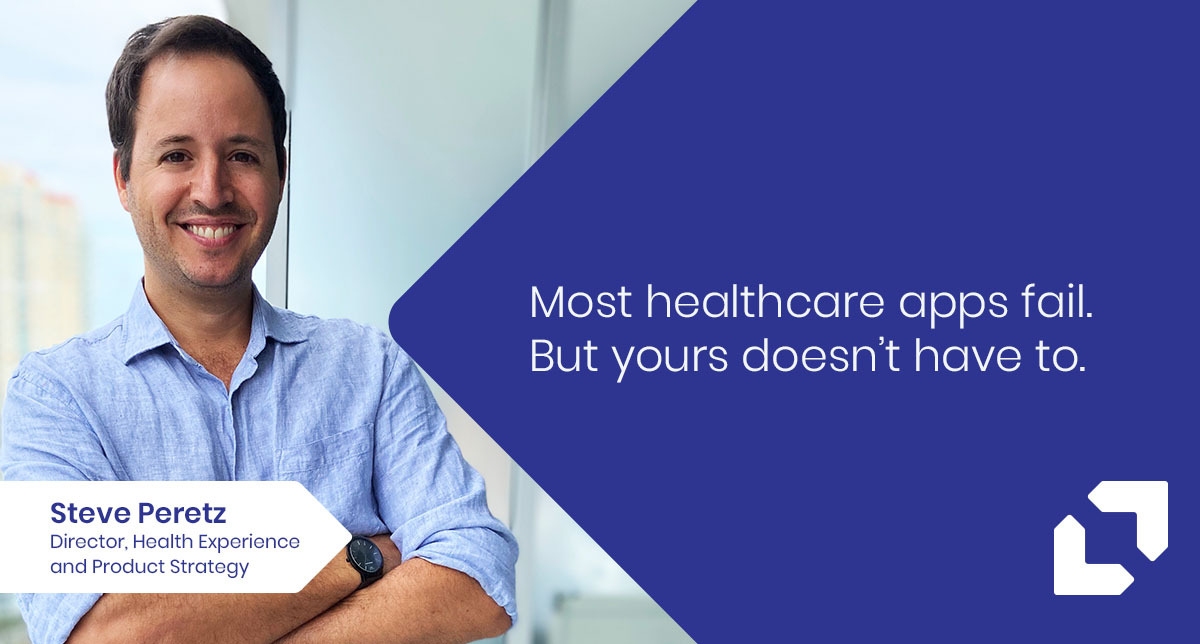With an estimated 350,000+ mobile health apps available, patients are more connected than ever. As part of the pill plus movement, most Pharma companies are creating digital support programs to provide more value to the broader patient and caregivers with their daily chronic health management needs (tracking, health literacy, timely intervention recommendations/motivations).
The number of digital health apps ballooned last year, with more than 90,000 new apps introduced in 2020, according to a report by the IQVIA Institute for Human Data Science on digital health trends.
Apps that focus on managing specific diseases or health conditions now make up 47% of apps, with mental health, diabetes and cardiovascular disease-related apps making up almost half of condition-specific apps.
With their potential to revolutionize how people access health care, why are over 90% of apps used once and then deleted?
We talk about patient-centricity a lot, but our definition of “patient” can be too narrow if we’re only fully aware of what’s happening with a patient during the regular milestones of diagnosis, or the moments in between when a patient is with their practitioner.
With a proactive strategy that addresses the patient-experience blindspot, and focuses on patient-centric solutions, healthcare apps can develop traction and create positive health changes in the lives of patients.
You can not only use existing health tech to pick up that data, but also distill and simplify it so both patients and doctors know what to do with it. At the end of the day, what’s the point of collecting data if your audiences won’t be motivated to look at it and ultimately change behavior?
3 strategies for digital healthcare success
1. Leverage Data Analytics to Make Better Decisions
Today’s healthcare apps are moving away from retroactive reporting towards interventions and predictive capability, and the data-related value at stake is over $300 billion, according to McKinsey & Company. For everyone involved, advances in data collection are good news.
Now, the question becomes, how do we streamline that data to gain a clearer picture of a patient’s overall health needs, what they actually need, and more importantly, want to use?
There’s also plenty of opportunity to use technology and data analytics in new and innovative ways to reduce the cost of delivering and financing high-quality and effective digital tools for patients, and delivering healthcare services in ways that consumers prefer to receive them.
2. Challenge assumptions with lean user testing - and deliver a more valuable patient experience.
Rather than planning expensive, one-time research to kick off a project, it’s as simple as putting your product in front of real patients as you’re building it. Don’t assume - start by understanding the why. Weaving ongoing user testing and behavioural feedback as a cyclical part of the entire development process is a game-changer.
Working with one of our major pharma clients on a digital solution for patients in the oncology space, we quickly analyzed social listening data and market research to prepare early hypothesis on the types of digital experiences that oncology patients might want. We then prepared surveys and stimuli to uncover the digital solutions that would be most desired by patients and caregivers who are affected by cancer. The results revealed clear common denominators across patients with various forms of cancer and helped inform a roadmap to create an oncology patient support digital program.
3. Keep it simple
At Appnovation, we talk about people-inspired solutions, and that’s what design thinking is all about: put the customer at the center of your thinking to unite experiences and drive digital transformation.
User experience is all about reducing frustration. By keeping it simple, patients are given what they need, when they need it, in the simplest way possible. By understanding what’s working, and what’s not, you’re ensuring that users will actually want to keep using it. Pharma brands have the opportunity to really connect with patients in a completely new way, providing them more value in their healthcare journey.
A health revolution is happening and the future is wrapping the healthcare experience around the individual, as opposed to the other way around. This means looking at a patient holistically, including all touch points digital or otherwise. Patients want more personalization and digital innovation as they draw from their experiences with other industries like retail. Better use of technology allows healthcare brands to rethink the patient experience, focus more on engaging patients and delivering better health outcomes.


